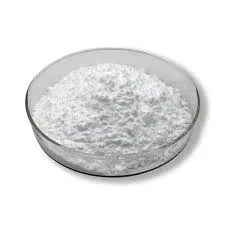
Aug . 08, 2024 05:25 Back to list
Overview of HPMC Grades for Pharmaceutical and Nutraceutical Applications in Formulation Science
Understanding HPMC Grades and Their Applications
Hydroxypropyl Methylcellulose (HPMC) has gained significant popularity across various industries due to its remarkable properties and versatility. As a water-soluble polymer derived from plant cellulose, HPMC has several grades, each tailored for specific applications. This article explores what HPMC is, its various grades, and their applications in different sectors.
HPMC is a non-ionic cellulose ether, characterized by its ability to form viscosity, stabilize emulsions, and enhance the texture of various pharmaceutical, food, and cosmetic products. Its unique properties, such as film-forming ability and solubility in water, make it an ideal choice for both industrial and consumer applications.
Understanding HPMC Grades and Their Applications
One of the most significant fields using HPMC is the pharmaceutical industry. HPMC serves as a crucial excipient in drug formulations, acting as a binder, filler, and controlled-release agent in tablets and capsules. Its biocompatibility and low toxicity make it highly suitable for direct ingestion. For instance, high-viscosity HPMC is often utilized in extended-release formulations, controlling the rate at which the active pharmaceutical ingredient is released in the body, thus improving therapeutic efficacy.
hpmc grades pdf

In the food industry, HPMC serves various roles due to its thickening, gelling, and stabilizing properties. It is used in products such as sauces, dressings, and dairy items to enhance texture and maintain the desired consistency. Additionally, HPMC is a commonly used substitute for fat in low-calorie food products, allowing manufacturers to create healthier alternatives without compromising quality. Its ability to retain moisture makes it ideal for baked goods, adding freshness and extending shelf life.
In the realm of cosmetics and personal care products, HPMC is prevalent in formulations such as lotions, creams, and gels. It acts as a thickening agent, providing the desired texture and stability. Moreover, its film-forming ability is beneficial in creating long-lasting products, such as hair styling gels. For these reasons, HPMC is favored in the cosmetic industry, where product performance and sensory attributes are paramount.
The construction industry also leverages HPMC in cement-based formulations. As a superplasticizer, it enhances the workability of mortars and plasters, allowing for better application and finish while reducing the amount of water needed. This not only improves the strength of the final product but also ensures a smoother application process, vital for construction efficiency.
In conclusion, HPMC grades offer a diverse range of applications across multiple sectors, reflecting their versatility and functional characteristics. Whether it is enhancing the performance of pharmaceuticals, improving food textures, elevating cosmetic formulations, or facilitating construction applications, HPMC is undeniably a valuable ingredient in modern industry. As research continues and formulations evolve, the demand for specific HPMC grades is likely to grow, solidifying its importance in various fields. Understanding the different grades and their applications will empower manufacturers and consumers alike to make informed choices.
-
Versatile Hpmc Uses in Different Industries
NewsJun.19,2025
-
Redispersible Powder's Role in Enhancing Durability of Construction Products
NewsJun.19,2025
-
Hydroxyethyl Cellulose Applications Driving Green Industrial Processes
NewsJun.19,2025
-
Exploring Different Redispersible Polymer Powder
NewsJun.19,2025
-
Choosing the Right Mortar Bonding Agent
NewsJun.19,2025
-
Applications and Significance of China Hpmc in Modern Industries
NewsJun.19,2025







